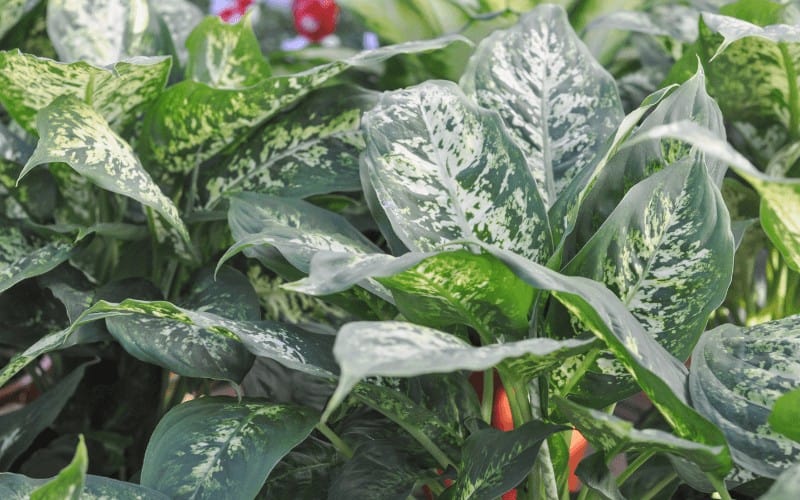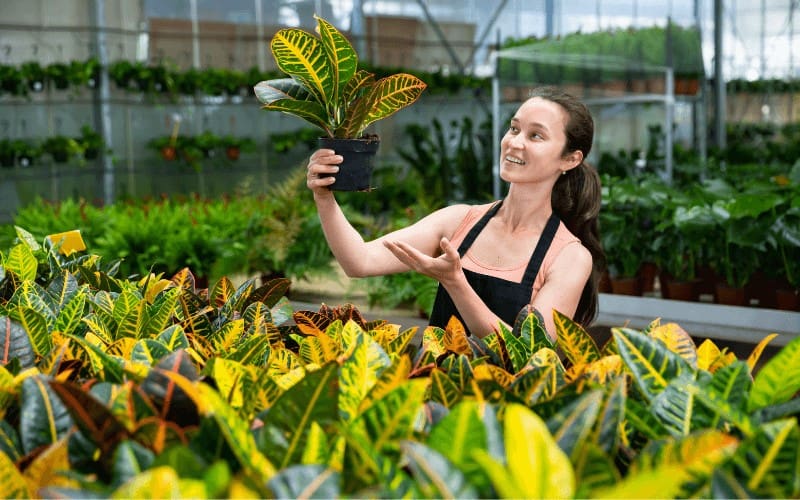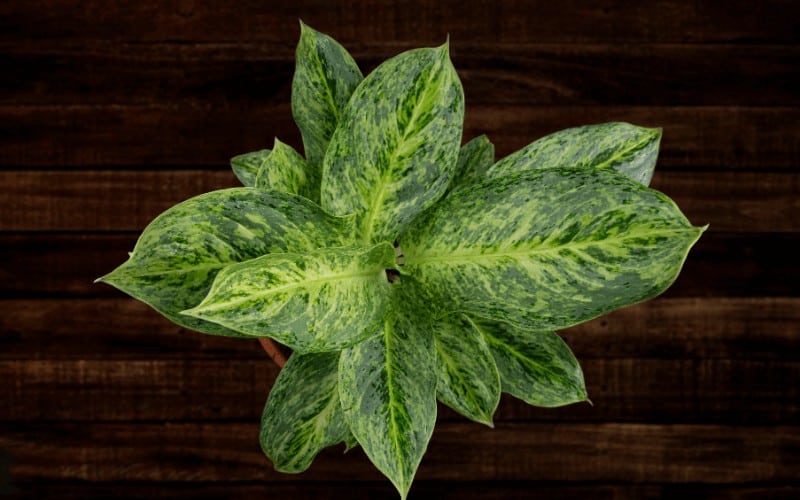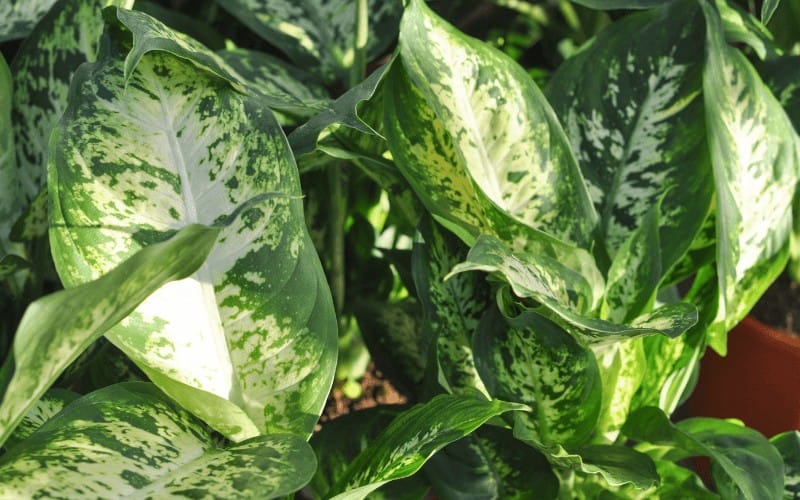House plants have been used as the most popular variety of home decor. One such house plant found in the houses is the dieffenbachia plant, also known as the Dumb Cane.
This plant looks beautiful inside the home environment. Even though many people think that outdoor plants require more care than indoor ones, it is absolutely a myth because both require equal care for proper growth.
So, if you have been thinking of growing dieffenbachia plant in your home, then it's time to learn the right ways of caring for it.
That said, let’s look at how to care for dieffenbachia plant like a pro!
Table of Contents
Dieffenbachia and Dumb Cane | Historical Overview
First of all, let us give you a little back story on how the Dieffenbachia tree name originated and why it is widely known as the Dumb Cane.
When the genus was discovered for the first time, the name was selected by Heinrich Wilhelm Schott, the Vienna Botanical Garden director. He kept the name after Joseph Dieffenbach, their head gardener.
Back in time, it was observed that people became speechless for a while after eating the tree leaves. It is so because the leaves contain oxalates and other harsh chemicals that cause the tongue's swelling.
As it can make people dumb, it is popularly called the 'Dumb Cane.' Slaves in the past were made to eat the leaves of the Dieffenbachia plant when they did something wrong. Dieffenbachia's poisonous effect on the tongue is known worldwide.
The tree has alternate leaves, green in color with a few white spots here and there close to the stems in terms of looks. Now that you know about the name and look, let's proceed further on how to care for a Dieffenbachia plant. Read on!
How To Care For Dieffenbachia Plant

Below, we will be talking about how to care for the dieffenbachia plant. Be it getting rid of poisonous weeds or preventing leaves' yellowing. We will share it all today. Reading this guide till the end will teach you everything about Dieffenbachia plant care.
With proper care, this tree can live for long years and stay super healthy. Among most other house plants, this is the easiest to maintain.
You need to learn the proper ways of Dieffenbachia care, and you are good to go. Below, our experts have shared some of the best caring tips for this tree. Keep reading!
How to Control Dieffenbachia Length
The dieffenbachia plant length highly depends on which variety of Dieffenbachia houseplant you choose.
There are multiple types of the tree available in the market. Usually, large trees like Dieffenbachia snow and Amoena grow around 5' feet long and 48" inches wide.
You need a larger spot for growing this variety so that the leaves can grow nicely without getting suffocated. If you have ample space in the house, larger trees will add to the rooms' beauty.
The dwarf variety like the Compacta grows only up to 28" when grown fully. After it grows to this much height, you can start cutting down its stem to stop overgrowth. The smaller varieties look good in compact rooms.
You can also cut clean the dead leaves to maintain the health of the Dieffenbachia plant. Ensure there is no remaining dead left in the tree because that might lead to other leaves' unhealthy growth.
Dieffenbachia Plant Light Requirements
To take proper care of Dieffenbachia, make sure that you do not leave it under full sunlight. This tree grows the best when it is kept in shade or semi sunlight. That is why people prefer keeping it inside their homes.
Even though they are intolerant to bright sunlight, the Dieffenbachia plant can grow well under artificial lighting. A few varieties can also strive in full sunlight, but they cannot tolerate wind and noontime sun.
Semi sunlight situations are the best because too much sun causes the burning of leaves, and on the other hand, lots of shade can give rise to the yellowing of leaves. That is why keeping the plant in partial light works the best.
Dieffenbachia Temperature Requirement

Most Dieffenbachia maculata care guides recommend that you keep the plant at a temperature of around 70o F. The temperature range can vary slightly, but if you keep it at too low a temperature, the tree will die soon.
Temperature below 60o F can curb the growth of the Dieffenbachia plant. And if it falls further to 55o F, then Dieffenbachia can get affected with cold damage.
Similarly, if you keep it at a temperature higher than 75o F, Dieffenbachia will become sickly, and the leaves might become weak.
Dumb Cane Plant Watering Needs
As Dieffenbachia belongs to the Araceae family, it is pretty evident that all its varieties are fond of humidity. Hence, please water them regularly. But in between, give some gaps so that the soil completely dries before you water it again.
Learning the art of watering your Dieffenbachia will take a bit of time, but once you master it, your plant will grow in the healthiest possible manner.
There is no such watering routine that we can guide you through. You will have to create a schedule based on the soil type, humidity, sunlight, and other vital factors. One of the significant Dieffenbachia care problems includes overwatering.
Ensure you avoid doing that because overwatering can give rise to weak growth, mushy stems, and other issues. Also, ensure the plant pot has enough holes for the passage of excess water.
Fertilization Tips For Dumbcane Plant

One of the best fertilizers that you can use for Dieffenbachia is liquid plant nutrition. Pour the liquid food into the soil every time you water the tree.
However, make sure you avoid using the solution during the winter. At that time, the plant can suffice with just water.
If you decide to shift the plant from one pot to another, we recommend adding some solid fertilizer. Other than that, the liquid variety will work the best for the dieffenbachia tree.
Best Soil For Dieffenbachia Plant
The soil you use decides the overall health of the dieffenbachia plant and hence, requires special attention. Most Dieffenbachia sanguine care or other variety care experts recommend that 1 part perlite and two parts of moss is the best soil choice for these trees.
This mixture is suggested if you keep the plant indoors. For outdoors, add 1 part loam into the mix. You can change the soil when repotting a Dieffenbachia tree.
The best time to change the pots is during the spring months because, after that period, the growing season approaches.
Propagation, Grooming and Pruning Dieffenbachia
You can propagate your plant to increase its growth rate. You can propagate it from stem shoots, top shoots, and the base of the plant. It requires no pruning, but you can groom it to keep the leaves clean and give them a proper shape.
Pest and Disease Control

Some of the Dieffenbachia pest and disease control solutions are laid below. Keep reading!
1. Yellowing of Leaves
Yellowing to leaves is a common problem seen in most plants. Remember, one or two yellow leaves in a plant are not unhealthy as that might be some dead leaf.
But when it starts happening in a considerable number of leaves, it needs proper Dieffenbachia care for yellow leaves. It usually occurs due to overwatering and is accompanied by brown tips, weak growth, curled leaves, etc.
A few tips that can help you get rid of the issue are as follows:
- Gently remove the tree from its pot
- Check the holes in the plot to confirm there is no clogging
- Check the tree root to see whether or not it is alive
- The roots must be white and healthy.
- In case there are any dead portions in the root, gently remove them.
- Repot the Dieffenbachia in fresh soil. If the root is healthy, then you can put the plant back into its oil soil.
- Properly pluck the dead leaves.
- Place the pot in a well-ventilated room.
Even after following these tips, the tree dies; you can propagate a new plant from its stem or shoot.
2. Bacterial Growth
Dieffenbachia is a plant that struggles the most with bacterial problems. If the bacteria happen to attack the tree, its leaves and stems can start rotting within a few days of the attack.
You can avoid overwatering and over-fertilizing the plant to keep it away from bacteria. But these are just a few basic ways of prevention.
There is no such method of giving Dieffenbachia strong protection against bacteria. Most plants, once attacked, have low chances of survival.
After the plant dies, you cannot use the same soil for further gardening. You will also have to clean the pot with proper disinfectants before using it again.
3. Browning of Leaves
As said before, you should not keep the plant in low temperatures because, in such situations, the Dieffenbachia might get prone to a fungal disease called anthracnose.
There will be brown spots on the center and the leaves' tips in this problem, close to the stem margin. Several tips for Dieffenbachia care for brown leaves are as follows:
- Gently remove the brown leaves.
- Store the tree in a dry and well-ventilated space.
- Use a fungicide to get rid of the fungus completely.
You can easily avoid this problem by keeping the Dieffenbachia in a room where the temperature is close to normal. Avoid keeping it in places where you use the air conditioner.
4. Root and Stem Rotting
When the stem and root start rotting, they become softer than usual. It is again a disease caused by a fungal infection.
A few primary reasons why this happens include improper temperature, overwatering, and high humidity. The steps of getting rid of Dieffenbachia Amoena Poisonous rotting are:
- Remove the tree from the soil, clear the ground in the pot, and cut the plant's rotten areas.
- Apply fungicide on the damaged parts.
- Take a new pot and fresh soil for replanting the tree.
You can follow the same steps if the stem gets rotten from the top-down portion of the Dieffenbachia.
5. Bugs, Spider Mites and Other Insects
When you keep the Dieffenbachia indoors, there are chances that the insects might be making their living space under various parts of the plant. It especially happens during the winter.
Various insects like bugs, aphids, and spider mites such as plant juices to feed their hunger. It takes away the nutrition from the tree, and it starts looking dull and weak. A few easy steps that you can follow for Dieffenbachia maculate care for pest control are:
- Check the tree once in a while for any sign of insect breeding.
- Properly clean the leaves regularly.
- Use the best insecticide spray to keep your plant away from notorious pests.
These steps can help you maintain any variety of the plant, be it Golden Dieffenbachia, Camille, or anything. So, follow the tips minutely!
Related Posts:
- Succulent Plants Types
- Types Of Ginkgo Trees
- Hoya Krimson Princess Care
- How to Care for Blue Plumbago Plant
- How To Care For Mulberry Tree
- Pachysandra Seeds Care
- Citronella Plant Care
Conclusion
We hope this article has helped you learn how to care for a Dieffenbachia plant. As you can see, the caring tips are pretty easy to follow. It just needs a bit of our attention towards the plant.
Make sure you try your best to keep it away from bacterial and fungal diseases because once that happens, there are fewer survival chances of Dieffenbachia.
You should also use fertilizers, fungicides, and pesticides only after consulting a gardening expert because not all chemicals will suit every variety of Dieffenbachia. Also, change the soil and disinfect the pot at least once a year. It will keep away all sorts of plant diseases.
All the tips shared above are right from the mouth of the experts. They have themselves tried and tested every piece of advice on a Dieffenbachia plant.
So, you can trust them! Now that you know so much about Dieffenbachia plant care, what steps will you take to protect your tree? We are eager to learn!




